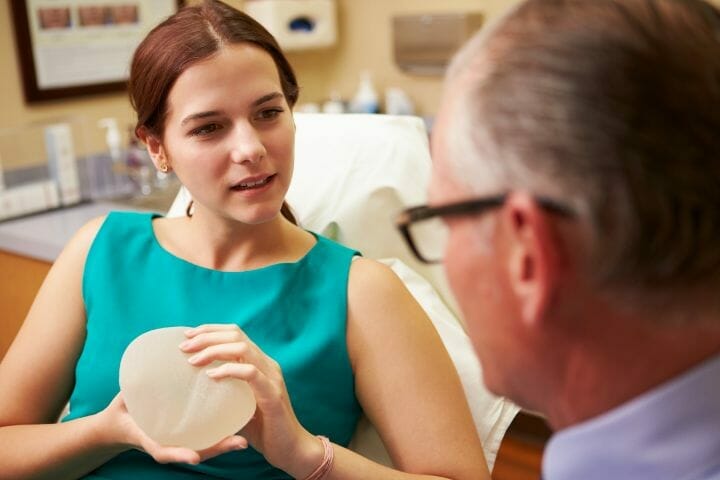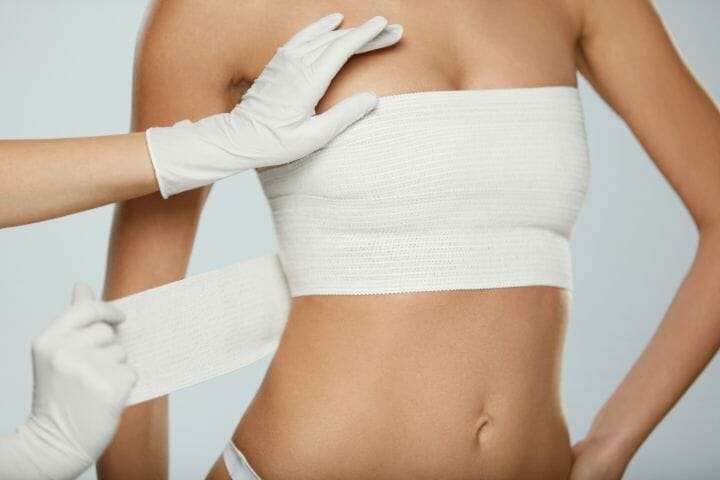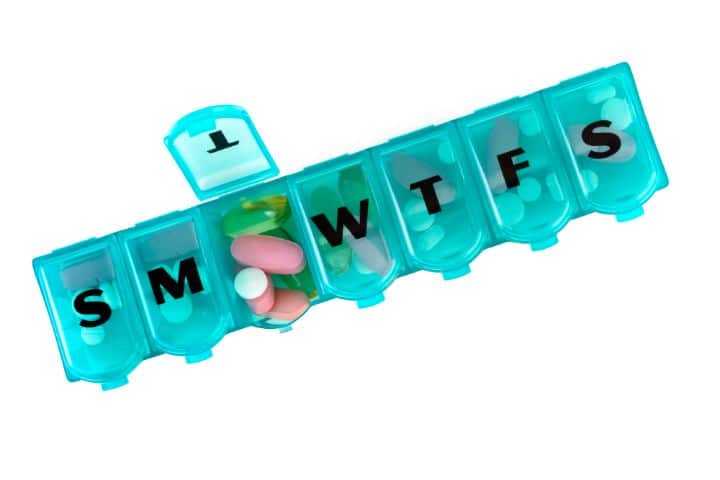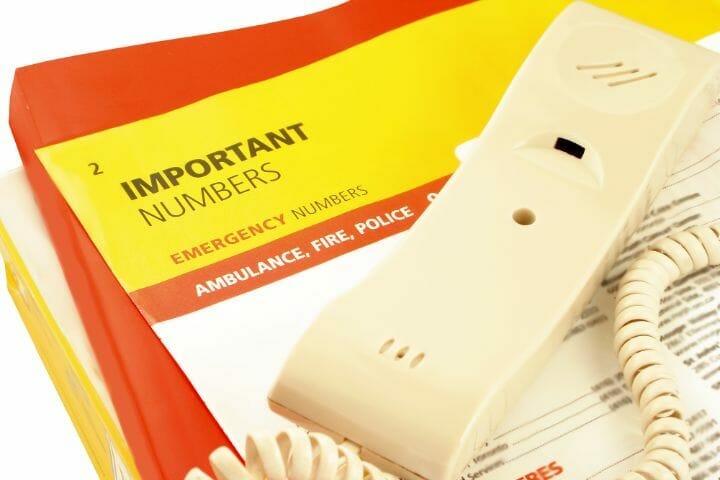Augmentation mammoplasty is most commonly known as breast augmentation surgery. Performed by a cosmetic surgeon, it is a surgical operation to increase breast size or change its shape.
Going through breast augmentation surgery is a tough decision to make. At the same time, it can be an exciting journey as well.
One has to consider a lot of factors from the pre-surgery phase to the recovery phase. Not having a clearly defined process to manage recovery post-surgery may delay the healing altogether.
Post-procedure, you may feel anxious to move around or speed up the recovery process. However, it is best to take it easy and relax during your downtime.
This article covers all the aspects from swelling and infection to managing your scar tissue and handling a possible rupture of implants. It also has must-have things for you to make a comfortable recovery from a breast augmentation procedure.
Recovery and Healing Period
Breast augmentation surgical operation is approximately 2 hours long. After the surgery, hospital staff will take you to a recovery room for monitoring. If you show no signs of instability, they will discharge you.
As far as the recovery time is concerned, the implant type, size, texture, and other bodily features contribute to the duration of your healing process.
If possible, you may take a one-week break from your daily activities to ensure you have a healthy recovery at the start. On average, you may take up to six weeks to fully recover from your breast augmentation surgery.
You may also like Best Mastectomy Recovery Shirts
The first month of recovery
The first few days post-operation will be the least comfortable. Besides feeling a sharp pain, you may also experience bruising and swelling in the surgical areas.
Your plastic surgeons may put sutures under the skin to give your breasts a natural look. You may experience the sense of pinching and some pain, you should avoid touching them.
During the first 48 hours after the surgical operation, you may also develop a slight fever. It is not a sign of infection but that your body is adjusting to the implants.
In initial days, you should cover your slit with a gauze dressing and ensure that you replace them daily. You may buy gauze pads from your local pharmacy or online:

You may be able to take a shower after 48 hours of the surgery. Your surgeon may also cover your incisions with steri-strips, which will enable you to wash them without being removed.
Having said that, it is best not to get into still water such as the bathtub, jacuzzi, or swimming pool.
By the third week of breast augmentation surgery, your pain and discomfort should lessen by themselves. It is the time when you can resume your regular activities but without challenging your physical strengths.
Although your scars will begin to fade by then, they will not disappear completely. You should continue to wear support or recovery bras, so it doesn’t disrupt your implants’ adjustment.
Next few months towards normalcy
The scars will eventually become almost invisible to the eye. Your doctor may also allow you to perform all normal activities. Just be careful of any strenuous activities. They can put pressure on your implants and can cause them to rupture.
By now, you will be more comfortable with your breast implants, and they will feel and look more natural. You should also check with your doctor to ensure you are on a normal path to recovery. It will be by the seventh or eighth month when your implants settle fully.
You may also like Must Haves After Mastectomy
Post-surgery effects
Breast augmentation is major surgery, and like other major surgeries, you should prepare for all potential outcomes. Knowing all the possible side effects will help you respond to them in your recovery period. Below are the most probable and troublesome side effects of breast augmentation recovery:
- Post-surgery, you may feel fatigued and tired. Also, the movement of your arms will be restricted. You may also face difficulty in getting up and walking around. You shouldn’t worry too much about it and find yourself a most comfortable spot in your house, so you don’t have to get up too frequently.
- A mild to moderate discomfort and pain signifies that your breasts are adjusting to the implants, and there is no need to worry. These pains may continue up to eight weeks post-surgery. You may also feel tightness and pressure in the chest area. However, your doctor will prescribe you medications to reduce those pains. The good news is that most of the discomfort and pain go away by the fifth week.
- Swelling and bruising is a normal side effect, and you don’t need to take it as a concern. In the first 48 hours, swelling and bruising will be at their peak. After that, it will start subsiding, and within a week, the swelling and bruising will be out ultimately. If you feel feverish because of swelling in the first ten days, you may apply ice packs to reduce the swelling up to a large extent. You should also avoid taking any blood thinners.
- Although not normal, you may also experience bleeding near your implants post-surgery. You must show it to your healthcare professional to ensure they address the root cause of the bleeding.
- Infection around the implants is also rare, but you must be aware of it. The first symptom of this is that develop a fever and feel unwell. If the infection is mild, antibiotics can help. However, a significant infection may compel your doctor to remove the implants. In these situations, your doctor will advise you on the next steps.
In addition to the infection, bleeding, and high fever, other symptoms may signify that your recovery is not normal. While mild itching is normal, you should consult the doctor if you are having severe itching at the site of incisions.
Incessant vomiting, intolerable nausea, constant dizziness, and numbness in other areas of your body should also lead you to the doctor. If you observe any of these, you should call your plastic surgeon for further instructions.
Expedite your recovery
Aftercare is an absolute necessity to get the best results out of your surgery. In some cases, the anesthesia administered during surgery will make you feel nauseated for the first day or two after surgery.
So, your preparation for recovery starts before the surgery day. It would be best to make yourself a bag with hand wipes, headbands, hair ties, a hairbrush, a compact mirror, makeup, lip balm, hand and face lotion, and breath mints.
Following are some of the things that will help you lead to a faster and healthy recovery:
Keep your body active.
After 8 hours post-surgery, you may be asked to raise your arms over your heads in a slow manner. Subsequently, this is an hourly exercise that should be done for the first three weeks while the patient is awake.
You may not be able to move your arms freely for two days after surgery. It will also restrict you from taking care of many personal chores by yourself. It is beneficial to arrange for someone to help you with the first couple of days.
Sleeping and resting: It is vital to get adequate rest for a healthy recovery. However, you must not sleep on your stomach or flat on your back. It is best to lie down in an upright position. It will accelerate your recovery.
Walking & Running: You will also have difficulty walking in the first few days post-surgery. However, you will be able to walk normally by the end of the first week. Once you are comfortable walking, it would be best if you walk for 10-minute every few hours. It will help in your recovery.
While walking is good, you should not run or jog. Either of these can damage your implants and put pressure on your incisions. So, it would help if you avoid it for at least two months after the surgical procedure.
Be careful in Pool: You may be able to go to the swimming pool for slow laps after two weeks post-surgery. However, you must not swim fast or dive into the water for the first four weeks, as it may damage your implants.
Limited Exercises: Concerning workouts, although you can do lower-body exercises such as squats, you should not try bending over or do chest exercises such as push-ups and sit-ups until full recovery.
Protect from Sunlight: You must avoid sunlight because it can damage your implants and make the incisions swell. If you must leave the house, apply sunscreen to your chest area 30 minutes before exposure.
Massage as instructed: Your surgeon may also recommend you to massage your implants lightly. You must follow the instructions you got from your doctor before attempting to massage your breasts so that it does not damage the integrity or causes a rupture.
Avoid Driving: Driving will put pressure on your wounds after the surgery. That is why it’s crucial to arrange for someone who could drive you home after the procedure. Just so you know, most people can drive after a week, but keep it for emergencies. It is best to avoid driving for the first four weeks.
No lifting of weights: You should now lift objects heavier than 5 pounds. It may disrupt your healing process. You may try to take care of your housework before surgery and try to have someone to help you post-surgery.
You may also like Best Bras For Mastectomy
Support your augmented breasts
Your surgeon will provide you with the tips and pointers to support your breasts following the surgery. Right after surgery, the hospital staff will place you in a surgical bra or wrapping, which you’ll wear for a few days. They will cover your chest area with gauze dressings and bandages.
For the following weeks and months, you will have to wear a bra all the time. It is crucial to hold your incisions and dressing in a stable position.
If you already have sports bras, they can work as compression garments to help reduce swelling. These may also accelerate your body’s healing and recovery process. However, it is highly recommended to buy specifically designed non-underwire Bras recovery bras.
These will help in implant stability. It is a good idea to buy one or two larger sizes to accommodate for swelling.
Although you may have some swelling for the next few weeks, in a few weeks, most of it will go down, and in a few months, it will subside completely.
After that, your breasts should take on a natural shape and be ready for the bra of your dreams.
Just to emphasize a salient point, the underwire can irritate the new incision, especially if it is under the breast. So, it would be best to avoid underwire bras for at least three months after your surgery, as they may potentially damage your implants.
Besides, because lifting arms will be uncomfortable right after surgery, sweatpants and stretchy tops with zipping or buttons will be your best friend as you recover.
Soft, cozy slip-on shoes and sleepers
You may not be able to bend down to tie your shoelaces or sandal belts for a few days after breast augmentation. So, it is a good idea to get some comfortable, slip-on shoes. At home, you can wear a new pair of soft, cozy slippers or socks.
Both of these will add to your relaxation and healthy recovery.
You may buy slip-on from amazon:

Pillows and Cushions
After the breast augmentation procedure, many women find it comfortable to put themselves in bed while their new implants heal. If you are one of them, you may buy a few extra pillows.
A set of comfortable pillows will give an additional layer of support for your healthy recovery. These pillows will support your back and side when lying down. These can also be placed on your chest to support your breasts when you’re sitting up or leaning sideways.
Hot and Cold Treatments
Your surgeon may recommend you to get hot or cold compresses. While cold packs are standard for this purpose, one may use heat in exceptional circumstances.
Sometimes, heat may exacerbate the swelling, so confirm with your doctor before giving yourself a heat treatment.
You may get four ice packs to have two in the freezer while the other two are in use.
Favorite movies and books
Post-operation, you will have a restricted set of activities to do. So, it is a good idea to prepare for your recovery by having plenty of movies, books, and games. Also, you may have a little trouble sleeping, so a book may help in that too.
Recovering from any illness could be the best time to catch up on your favorite television shows, movies, magazines, and novels. The recovery period of breast augmentation is no different.
If the pain medicines make you feel drowsy, watching your favorite television shows and movies can be the most comfortable thing to do.
You may also like What to Wear After a Single Mastectomy?
Food and Nutrition
The set of instructions you may receive from your hospital and surgeon should also include a detailed list of food items you can eat.
We can’t emphasize it enough that without the right nutrition, your incisions will not heal properly, and your breast implants will not recover as they will not have the support of required vitamins, minerals, and proteins.
Staying hydrated is essential. Besides plain water, non-carbonated and caffeine-free beverages such as herbal tea, Lemonade, and orange juice are great for breast augmentation aftercare.
It would be best to avoid caffeine because it stimulates your nervous system, giving you a feeling of agitation, nausea, and discomfort after surgery.
Also, two weeks before your operation, you should stop drinking alcoholic beverages. Especially after breast augmentation surgery, alcohol may act as a poison. So, you must keep alcohol beyond your reach for at least a month post-surgery.
Like drinking alcohol, smoking can have a detrimental effect on your recovery. Nicotine causes blood vessels to constrict, which may put you at risk of surgical complications.
Continuing smoking after the breast augmentation surgery will lead to infections, blood clots, increased pain. All of these may ultimately lead to implants’ complete failure.
When talking about food, try to eat in smaller portions to help your digestion and immune systems. It would be best to take nutritious meals composed of vegetables, fruits, and nuts.
Fruits such as apples, oranges, kiwis, and bananas not only help boost your immune system but also reduce nausea. Nuts like cashews and almonds are great for healing your skin tissue.
You may also consume eggs, rice, soy, mashed potatoes, and beans. They will help you boost your immune system and energy levels. However, for at least a month post-surgery, you must avoid high-calorie fast food because it can adversely affect your digestion.
Also, at least two weeks before surgery and a month after your surgery, you should limit the consumption of salty food as salt tends to raise your blood pressure, putting a strain on your heart and blood vessels.
Medications & Supplements
As part of preparing for your breast augmentation procedure, you may also be given antibiotics and painkillers prescriptions. Your doctor may also provide you with any necessary medications in advance.
These prescribed painkillers and antibiotics will help with the pain and prevent infection. You must stick with your prescription and take your medicine regularly.
It is a good idea to take your pills after you’ve eaten. It helps avoid constipation and other side effects.
Your doctor may also prescribe you add supplements to your diet. They help in boosting your immune system and healing.
Multivitamins and ZMAs (zinc, magnesium aspartate, and vitamin B6) can help you receive ample nutrition for your recovery after breast implants.
However, you must ensure that your doctor is available for any supplement you plan to take.
Somebody to Take Care of You
It would be best to avoid heavy activities that could raise your blood pressure for the first couple of days. It will be helpful to have someone stay with you for the early 48 hours in case of any unexpected complications.
After the surgery, you’ll be unable to drive and will need someone to take you home. So, as mentioned earlier, you must have somebody to give you a ride home after surgery.
You may arrange for a taxi beforehand if you can’t find a friend or family member to drive you home at your required time.
You may also need help right after surgery, so it is vital to have someone around who can take care of you during the first few days post-surgery.
You may also like How To Reduce Drainage After Mastectomy
Keep emergency contacts handy
After your surgery procedure, your surgeon will provide you with the necessary instructions for the aftercare.
The hospital staff shall also give you medications and prescriptions to manage your pain and other side effects of breast augmentation surgery.
They will also set subsequent appointments after the surgery to replace your bandages, check the progress of your recovery, and monitor your implants’ state.
Between these appointments, if you feel any issue or abnormal symptoms, you should have handy the contact number of the hospital, your plastic surgeon, and your local physician.
It will ensure that all the potential medical risks are managed appropriately.
In nutshell
If you follow the guidelines mentioned in this article, you will experience a smooth and expedited recovery after your augmentation mammoplasty procedure.
It may be overwhelming at the start, things will be easier to manage, and you will feel comfortable slowly as you move ahead into the process.







